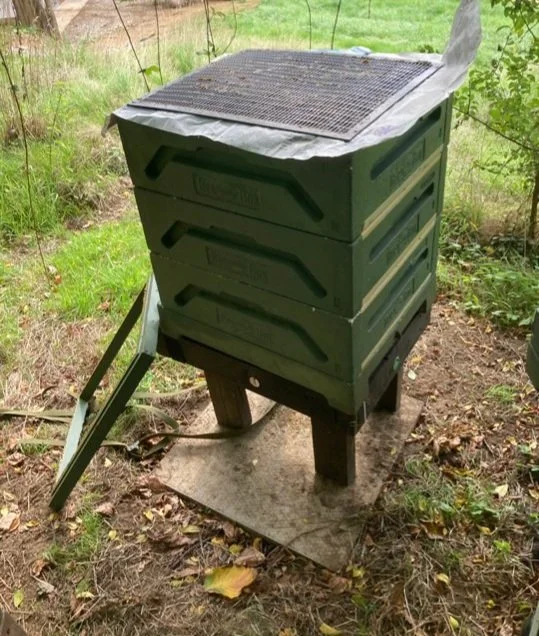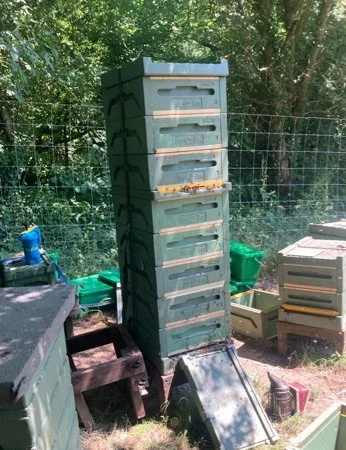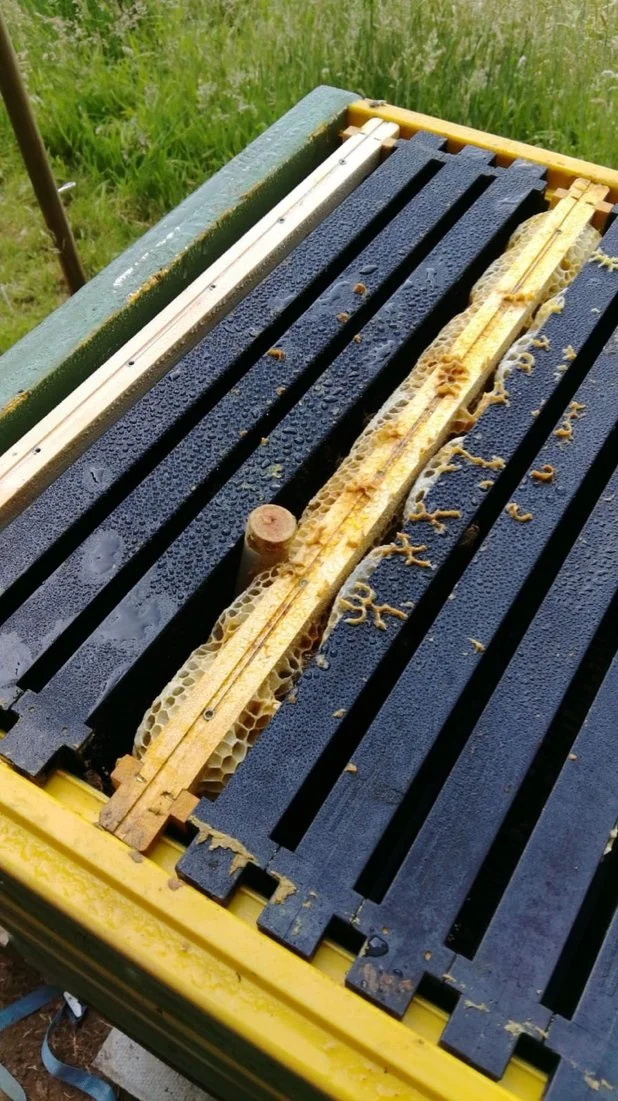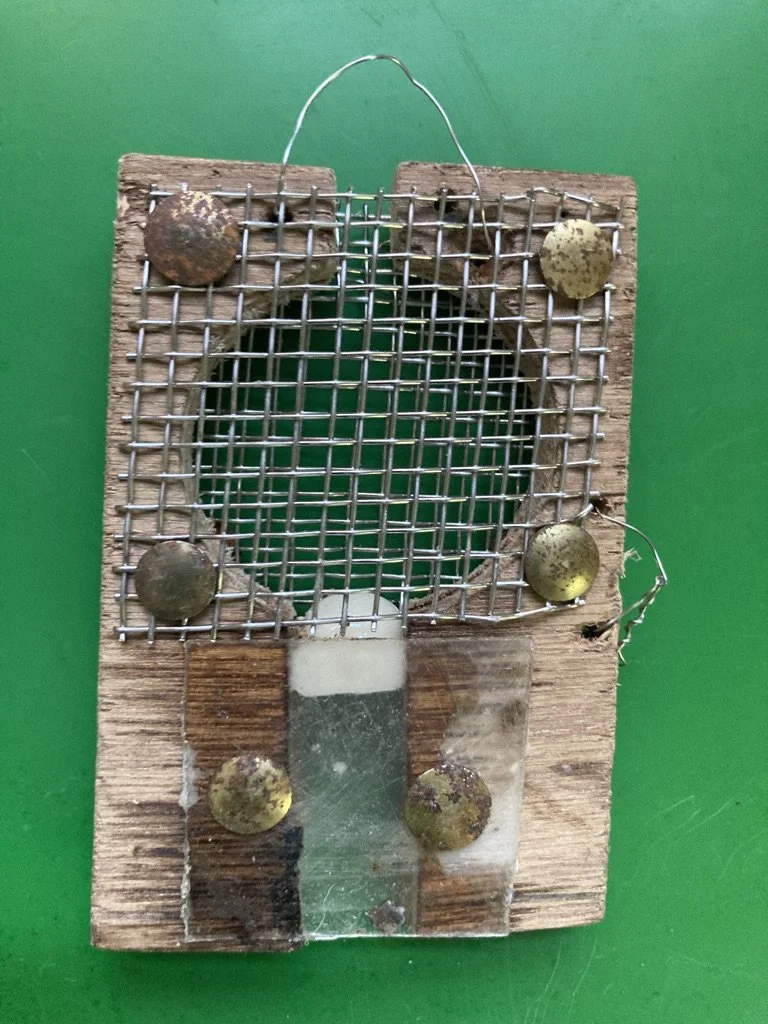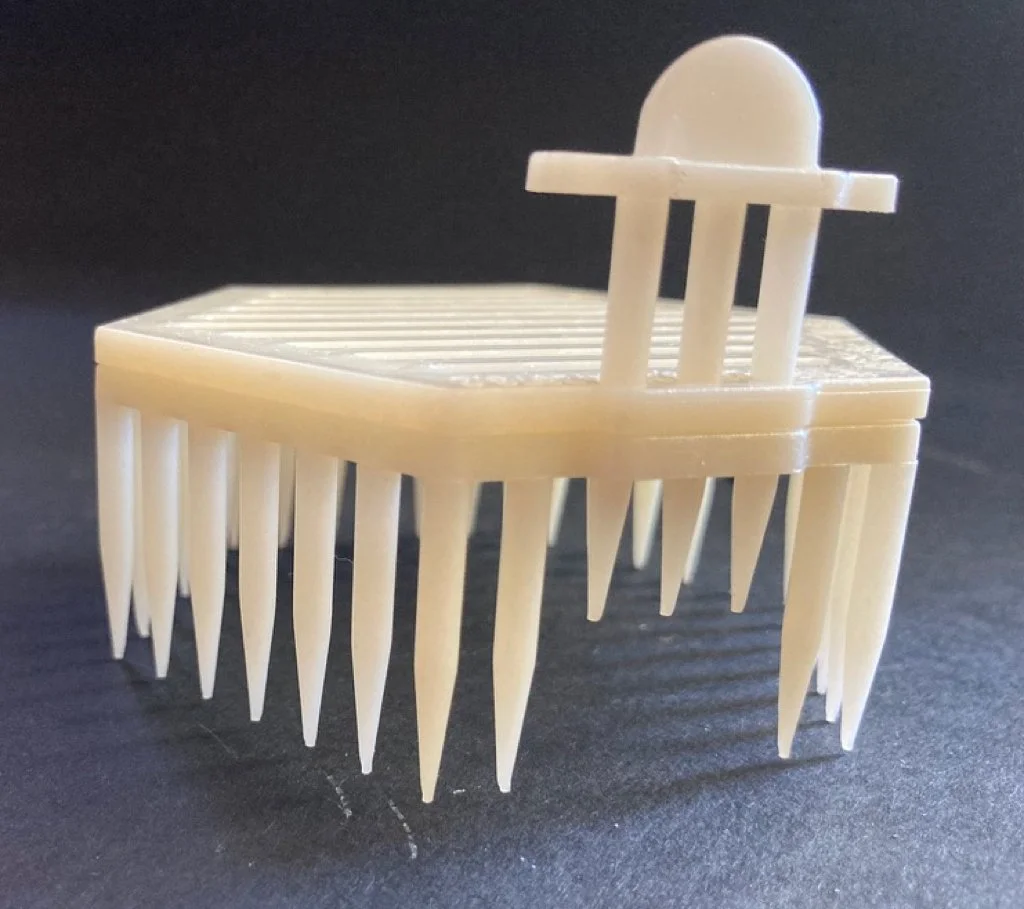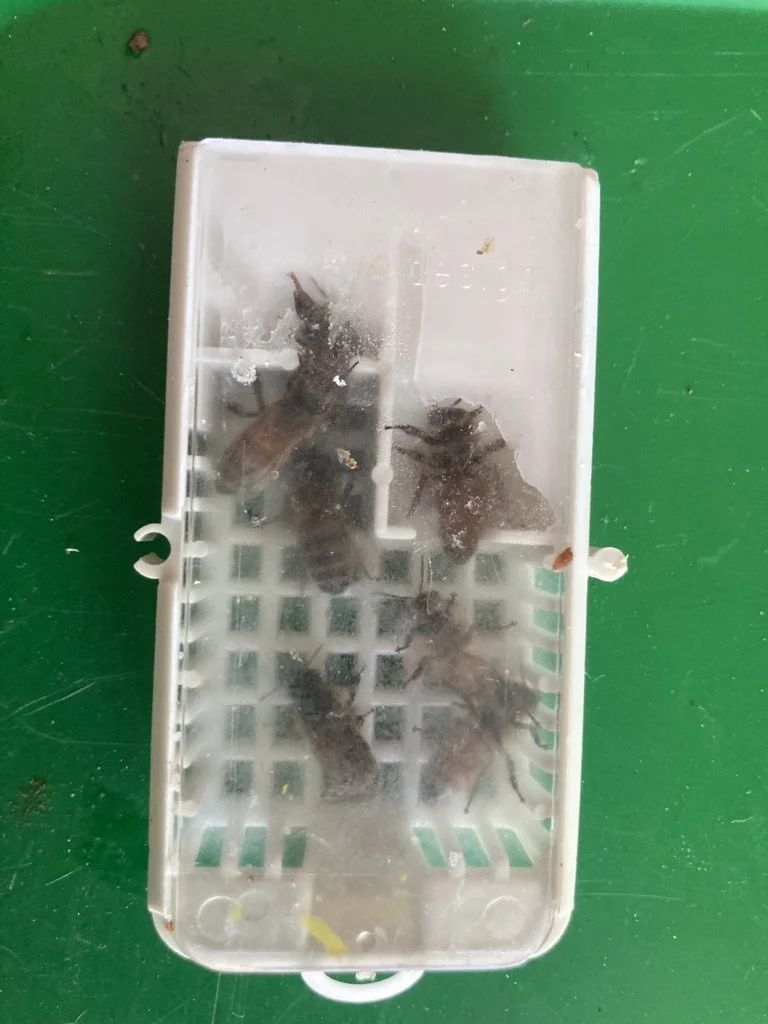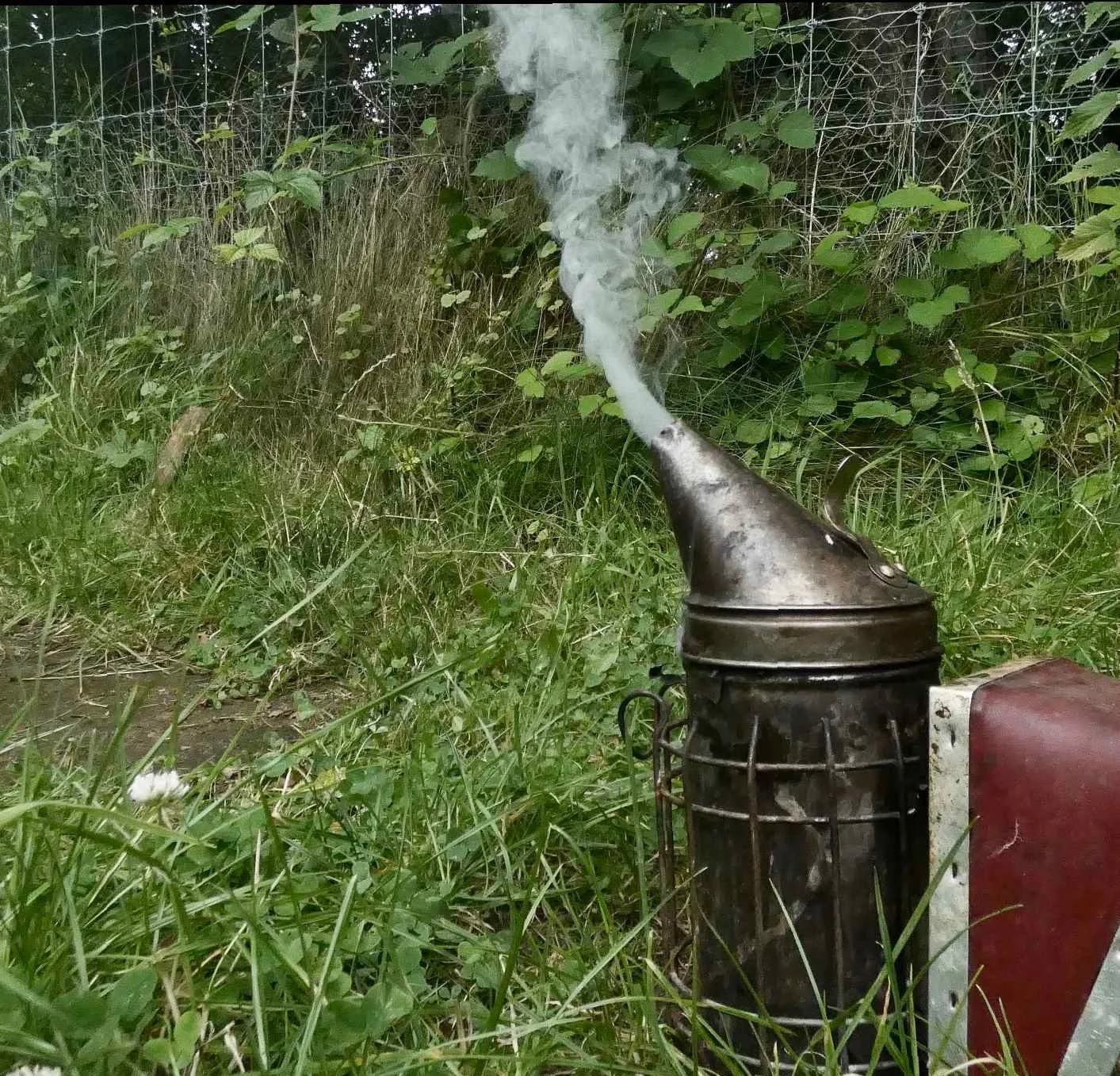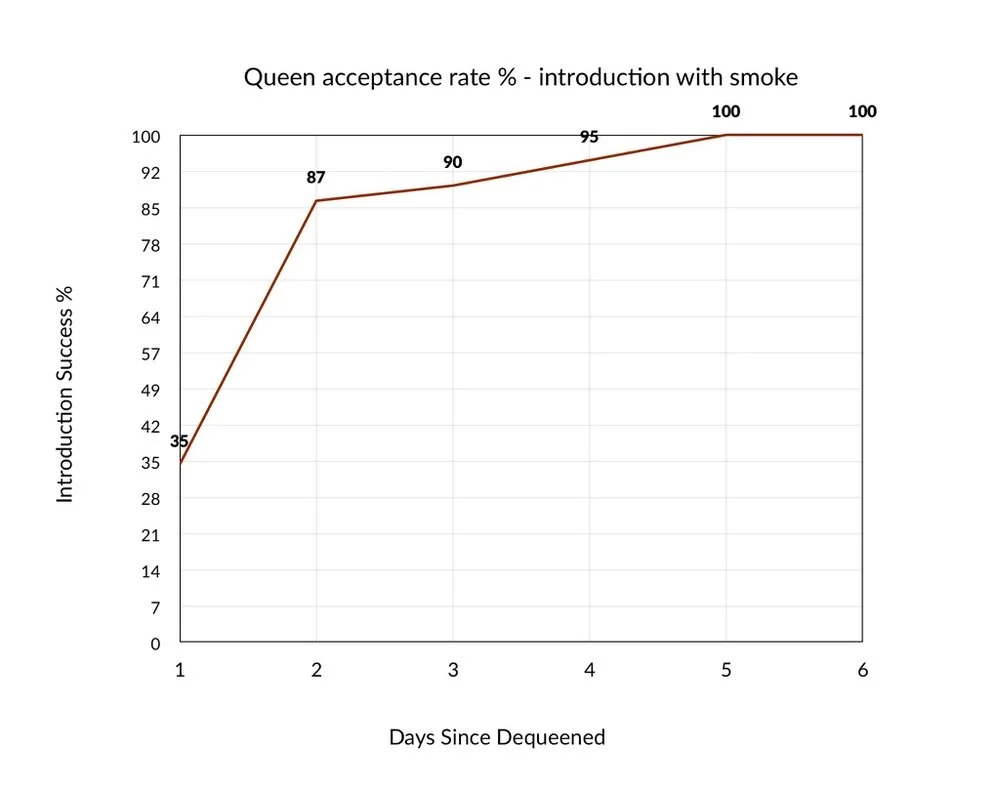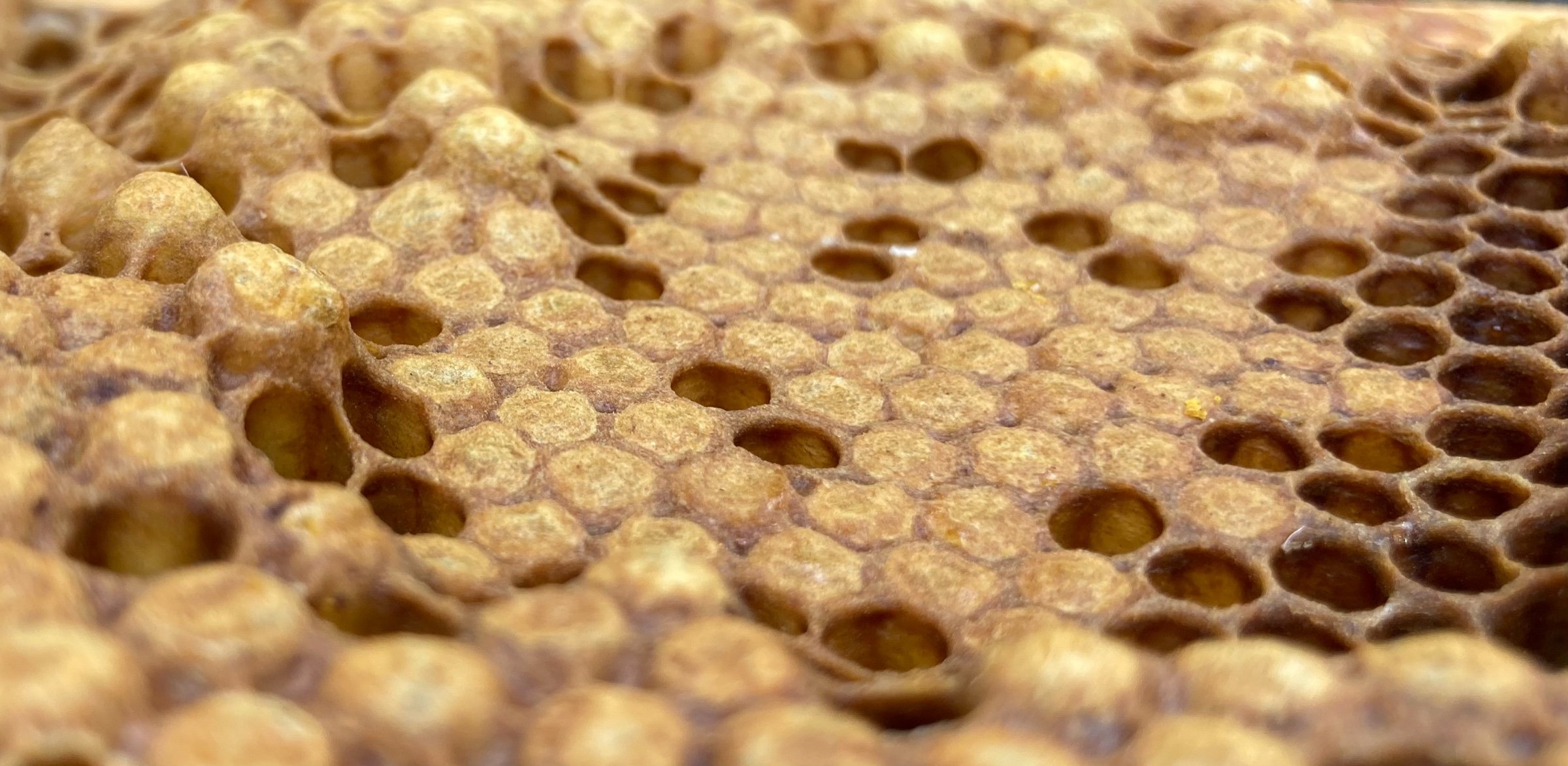
Uniting Colonies
Queen introduction
Transfer queens/bees to other colonies
13 minutes
Describe one method of uniting colonies and the precautions to be taken.
Uniting colonies Obtaining queens Queen introduction
To sound like a seasoned beekeeper, using the term 'unite' is crucial when referring to combining colonies. This term carries a professional weight that 'join' or 'combine' can’t match, much like calling a squirrel a rabbit.
Uniting Colonies
Reasons to unite
Uniting colonies into one or giving a colony a new queen (Q) requires stealth; colonies don’t like sharing their home with foreigners. Colonies fight when they meet each other unless they perform a handshake first. All colony members share a unique hydrocarbon signature in the wax that covers their bodies. They also have a distinctive smell that starts to be expressed mid-pupation. Soldiers need time to recognise that foreign bees are friends. Q introduction methods can be divided into Emergency (E) and Supersedure (S). E emulates the state when a Q is lost. S when they thought they had a Q but must need a new one.
Colony reduction
A colony is too small to survive the winter
Before a nectar flow (one large colony makes more honey than two moderate ones).
Too many colonies
Requeening
To move a colony
When is a colony is too weak to get through the winter? It is impossible to be dogmatic, My only overwintering loss was my fault, so I don't know (I expected a colony to supercede too late in the year).
Sufficient amount of brood is around 4–6 frames in early September (this may not apply to “single-box brood” strains of bees — less prolific ones that do not require two brood boxes).
If a colony is healthy but small, consider over-wintering it in a nuc. Typically, it is a late swarm with two or three decent frames of brood. I recommend using a double body nuc with up to 8 frames of stores.
Several techniques exist to make two colonies become one (like sex). Methods include putting newspaper between the colonies, using perfume, or dusting the frames. If you make a mistake and both colonies are queen-right, you must detect this as soon as possible. Thie newspaper method makes this possible. Otherwise, after one Q dies, the armies will sue for peace.
Newspaper Method
One colony is placed on top of the other with a sheet of newspaper in between and an optional queen excluder (QE) on top to prevent the newspaper blowing away.
Before this, recompose the boxes so that the supers in the bottom colony are placed above the floor, with the brood box above. For convenience, the colony that moves position goes above. In this way the bees from the top box must migrate through the lower box, which prompts them to orientate.
Caution is required when moving colonies in order to avoid lost bees. Indeed, some flying bees may get lost from the colony you move. I’ve never noticed. If some do get lost and you have other hive(s) close by, don’t worry. But if you don’t, or they are sizeable colonies, perform the manipulation in the evening to avert lost foragers. Following this, they re-orientate and few foragers get lost. Before uniting colonies, some people have staggering patience and move the hives three feet closer every day until the hives are side by side. In which case, either colony can be placed above the other. The logic is attractive. I’ve never followed it.
After two days, open the top box and remove a couple of frames. Peer in to check that all is well. If there are rows of intimidating eyes around the holes in the paper, something is wrong. Both halves must contain a queen or queen cells (QC).
They chew the newspaper into minute pieces which drop through the Open Mesh floor.
It is easy to detect fighting using a manipulation board. When using it for uniting initially, set the walkway to mesh. After a couple of days, open the QE. A while later, check for fighting over the QE. The action may be in slow motion, so look carefully.
Some books say that if you see paper strewn in the apiary, this signifies success. This occurs with a solid hive floor, but with an open mesh floor (OMF) the paper is munched into fine pieces and blows away unseen. There is no immediate need to remove the newspaper remnants although, if you remove it, the bees can do something moore constructive.
Once you are satisfied all’s okay, remove the QE and sort through the frames so that the brood frames are confined to two boxes. Pop the supers on top. Job done.
No holes
When using newspaper, a common belief is that you should poke little holes with a pin or nail or some little gashes with a hive tool so that the colony pheromones and odours can mingle and the bees can touch antennae. This voodoo is unnecessary. I’ve never done it, and my combining is 100%.
Perfume & flour
Quick and easy. A brief squirt of deodorant into the lower colony makes the bees buzz down into the hive. Another brief spray into the other brood box makes them forget their differences. Alternatively, dust the surfaces of the frames with flour or fine sugar (these dusting methods sound messy, so I’ve never tried them).
Perfume is my favourite method for uniting nucs or small colonies. If you spray much too generously, I anticipate they’ll die. Apparently shaking one box of bees into the other helps. I’ve never bothered.
A two queen colony
Other Methods
Spray the surfaces of the frames with a 1:1 sugar solution containing a few drops of vanilla essence or peppermint water (made by dissolving a sweet).
For nucs: alternate / interweave frames throughout the box, leaving the nucs open to the sun for several minutes beforehand.
Mix bees from 3 colonies. This works when making nucs.
Two swarms can be thrown together without taking any precautions. Leave them to sort out their Qs.
Three nucs can be united to make one colony; shake them into a hive body.
Wrap the frame that contains the Q in newspaper, rather like a parcel. This is a brilliant thing to do, particularly if you make custom sized paper bags.
Obtaining Queens
The majority of breeders in the United Kingdom produce either Carniolans or Buckfast. My experience is that Buckfast, Carniolans, Surrey, Local and Northumberland bees are all docile and all swarm.
Try to purchase a local Q who is accustomed to your local conditions. People often have QC they don’t need.
Order British bred Q well in advance. They soon get sold out. If you cannot buy British, you must buy an imported Q. For reasons unknown, imports of Qs are rising. Not all shipments can be checked, so imports may introduce disease.
A few years ago, I decided to re-queen all my colonies. I introduced the Qs into nucs initially: one Q never laid, one got stuck in the candy and died, another was superseded immediately, and I killed one when marking her, which left me one, and she had a small abdomen. I vowed never to buy another Q. If you receive a Q with a small abdomen, take a picture and get a refund. Next year, I bred from my bees, and their daughters weren't perfect. Second or third-generation progeny from pure bred Q can produce aggressive bees. The effect declines and usually disappears due to the paternal influence.
Queen Introduction
Generally, beekeepers use the “travel cage/standard cage method” to introduce new Qs, Some beekeepers report that their success using this method is perfect, yes, 100%. For the rest of us, a success rate of 50% is usual. Fortunately, there are better methods.
If you introduce the queen into a colony that has no open brood, giving it a frame of open brood significantly increases acceptance (9) from about 33 to 86% with a package.
Methods
Run her through the entrance (S)
Defended QC (S)
Butler cage (S)
Standard / hair curler transport cage (E)
Smoke (E)
Press on cage (E)
Supersedure methods
Think of sheep. For a ewe to accept a surrogate for her dead lamb, the usurper needs to smell like the dead one. The farmer skins the dead lamb and places it over the new lamb like a jacket. Alternatively, the farmer rubs the new lamb with the dead lamb. Neither of these “supersedure” methods are always successful, and I bet one method works better for some farmers than others. In the same way, you need to find an introduction method that works for you.
1. Run her through the entrance
Remove the old queen and immediately run a virgin into the hive through the entrance. To get the virgin, a QC, day 15–16 is uncapped, or a recently emerged Q is released so that she walks straight in through the entrance. First, smoke very generously to knock out the guard bees. After you release her, smoke some more so that she does not do a U-turn.
The success rate is good. There must be a time window for when this “handshake” is most successful, in which they will immediately accept a virgin. I’ve no idea how long.
2. Insert a protected Queen Cell
Introduce a protected QC with or without removing the old Q. Since workers only destroy QC at their base, they tolerate a protected QC. A twirl of tin foil or electrician’s tape wrapped around the cell works well if you can stop it from falling off. It must be a tight fit. Arrange it so that only the tip, about 2 mm, pokes out. Go upmarket, and metal coils and plastic cages are available. When introducing a QC with the residing Q present, supersedure occurs in 5% (research) to 85% (experienced beekeepers).
To introduce a QC to a hive without transferring the whole frame. Lay waste to the comb around the cell and slice under it with a scalpel. Leave a skirt so that it can be pushed in to position on another frame. This manoeuvre works best if the QC is mature > 13 days old because QCs are hard and resilient at this age. Here is a short video using a fine metal cloth teabag. Presumably, the recipient hive was queenless for seven days. This technique is suitable for plastic frames.
A protected QC can be wedged between the frames
A queenless period results in a better chance of acceptance. A QC grown on a wax or plastic frame can be pushed into the face of a comb. QC placed in cages should hang down between the frames.
3. The Butler Cage
This fundamentally works on the same principle as the Standard cage, except that the reesident Q is removed, and the cage containing the new Q is immediately inserted into the hive. It is more effective than a standard plastic introduction cage (which may be erroneously called a Butler cage). The Butler cage has large holes, enabling the bees to feed and groom the Q. My cage has a 4 cm tunnel for candy (honey mixed with icing sugar approximately; a 50:50 mixture to make a sticky-free ball). It takes the bees approximately two days to eat through and release the Q. A cautious person can put tape over the end of the tunnel and remove it after two days.
The original cage is a tube of mesh: 7.5×1.25×2.5 cm, which makes for 56 cm2 surface area. The queen is trapped inside by securing a piece of newspaper over the open end. Even the venerated Mr Cushman can't resist poking a few pinholes in the paper. The wire size Butler used is 22 swg = 0.7 with a hole size of 3 mm x 3 mm. The hole size was scientifically determined. Mesh with the correct apertures is available on eBay (2022). Someone on a forum reports that 4 layers of newspaper works for them (with needle holes).
My “Butler cage” and bought cage.
My cage has the same principle as the original Butler cage
The new mated Q goes in the cage without attendant workers.
Immediately after removing the old Q, hang the cage in the middle of the brood nest.
Make sure that there is space for the bees to crawl all over the cage. Consider removing a frame to enable this. With 40 mm of fondant, the workers may release her after two days, but it can be sooner. There is advice to provide a safe area for the Q so she is not injured. I have not had a problem without it.
Tubular Butler wire cages are sold, but may not be the real McCoy. The one I bought was a slim coffin, and the wire gauge and holes were too small.
If a child is short of toys, give them one of these; it eats things, including a queen. If you cannot handle the Q but want to move her to another container, this cage is very handy. It is available from
bee-equipment.co.uk. (2024)
The bit at the top is a portcullis. To transfer the Q from a travel cage, sink the cage into a sheet of polystyrene. Otherwise, place it over the Q on the comb. If you use plastic frames, it grips better if you remove the pointy bits using a toenail clipper. The device does not isolate the Q because the gaps between the tines admit workers.
Emergency response methods
4. The standard cage
This sort of cage is used to transport bees through the post. The cage (sometimes incorrectly named a Butler cage) contains some candy, workers, and the Q. So long as some companion bees (about 6) are alive, the Q should be okay to wait introduction for up to 5 days when kept in a kitchen cupboard. If she becomes languid, she is feeling cold.
The Q is upside-down, stuck in the candy.
Apply a daily drop of water to the cage whilst the Q waits to be introduced. If all the workers die, introduce her as swiftly as you can. Alternatively, she can be banked (put her cage above the QE in a queen-right colony).
Many beekeepers remove the companion bees before the introduction. Otherwise, they may fight or obstruct the exit when they die. Some consider it unnecessary. It is wildly believed that virgin queens can feed themselves, whereas mated once can’t. It is probably eroneous. Mated queens often appear to take fondant in a cage and are apparently seen taking honey, royal jelly and water in an observation hive. While this may be so, it’s better to giver her some attendant nurse bees. Of course, once she gets laying she needs prodgious feeding.
Bees acting aggressively to a queen in an introduction cage
Remove the old Q and keep her safe in a nuc. Once the colony has been queenless for five days remove all the QC.
The cage is placed in the hive, between brood frames, with sufficient space for the bees to crawl around it. Examine the cage after two or three days to see whether bees are gnawing at the bars. If the cage looks like a hedgehog, they need more time. If the bees are crawling over the cage nonchalantly (which can take 14 days, although most people get bored with waiting so long), open the tab on the cage. The bees can eat through the candy and release the Q. I’ve seen someone put a nail through the candy to make it easier for the bees to get through; it’s an example of voodoo. After another 48 hours, find out what is happening. Some beekeepers would release her at this stage, although a release after five days would be safer. If the candy has gone, but she is still in the cage, this is believed to signify that she is under a stay of execution (death not legal), so remove her.
Bees can be relaxed with a queen, but subsequently kill her.try this::
Destroy the QC. Leave the colony queenless (5-7 days).
Destroy the QC. If there is no honey flow, feed some syrup. Remove the companion bees. Pop the queen cage in for 2–3 days. Ensure there is space around the cage, so the bees can give the new Q a handshake (feed and touch her).
If the bees are gathered around the cage on the second or third day, leave them for a further three days.
If aggression towards the Q persists, check there isn’t another Q in the colony. Move the new Q (in her cage) into a nuc and use a test frame in the colony to be re-queened.
5. Smoke
The smoking method is known to be effective in Langstroth 5-6 frame, with medium frames and bees on six frames with 2–3 frames of brood. The research protocol was to discontinue feeding for one week before and during the introduction. With a mated Q they found that the colony needed to be queenless for five days before introduction, 7 days for a virgin. Success was nearly 100%.
Your smoker must be belching lovely white COOL smoke which is easy when using sawdust as a fuel.
Smoke temporally cripples the bees’ ability to sense the new queen. Use plenty of smoke, at least three massive puffs each application.
Once you’re ready:
The bees are smoked heavily through the entrance.
The queen is dropped in between the frames and smoked down. If you nudge her off her frame or out of her cage she may not like the smoke and decide to walk out of rather than in to the hive. If she is most unimpressed, she will fly away – immediately. Young queens that are supposed to be too fat to fly, sometimes do! To prevent this, I’ve cut a hole in the middle of a propolis screen with the plan of introducing her through that.
Replace the roof for a moment. Smoke through the entrance and repeat at the top.
Complete methodology - research paper
6. Press on cage
I have no experience, but it has positive reports, and so it should. The trouble for some beekeepers is that you have to handle the queen. But it should be possible to goad her onto the correct frame and place the cage on top when she is not looking.
Choose brood comb where bees are emerging so that baby bees look after her. In this way, she becomes more acceptable to her minions. The bees tunnel under the cage to release her. This white cage works, but is ghastly because you cannot see the Q.
Following an introduction, you have three options
Inspect after five days. I do this. Colonies commonly seem to accept their new queen. She starts laying, but they supersede her; there are QC, and she has disappeared. If you find QCs like this, and there are eggs, destroy the QC, and the colony may accept their new queen. But occasionally, they don’t. If they build more supersedure cells, remove her and let them continue. This occurs if she is not well-mated or they cannot detect some of her pheromones.
Look in after one week so that if she has been rejected, you can try again sooner rather than later.
Leave the colony alone for 10 to 14 days to reduce the chance of her being rejected. I do not know whether this “sounds a good idea” or has been compared with other regimens. The breeder who does so reports 100% acceptance.
Cut to the chase
You say, “Cut out the blurb. I haven’t any experience, and I want to know the easiest and most reliable way to introduce a queen.”
Okay, two options:
If there is only one brood box, the bees are not covering less than six frames, and the hive has no supers, Smoke her in otherwise:
Introduce her to a nuc using the standard cage. Once she is laying well, unite the nuc with the colony to be re-queened. For greater surety, wait until some of her brood has emerged or (pure conjecture) when her bees are mature enough to fight.
Even the best methods fail.
Other methods - queen introduction used to be easier
Put a caged queen in your pocket for two hours so that she becomes hungry. Dunk her in tepid water and drop her into the hive.
Spray the bees and queen with sugar solution. Drop the queen in.
BK 5.

